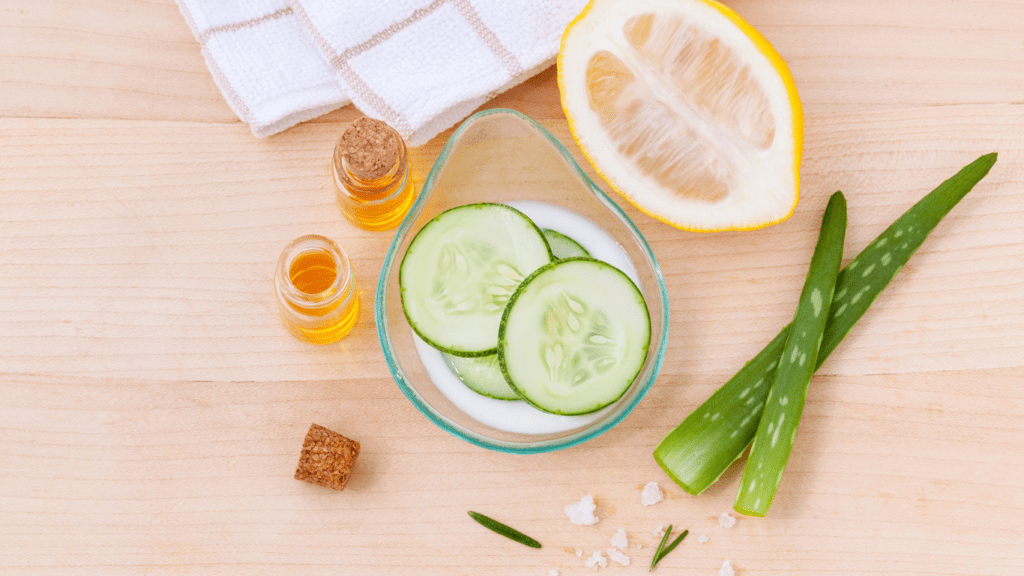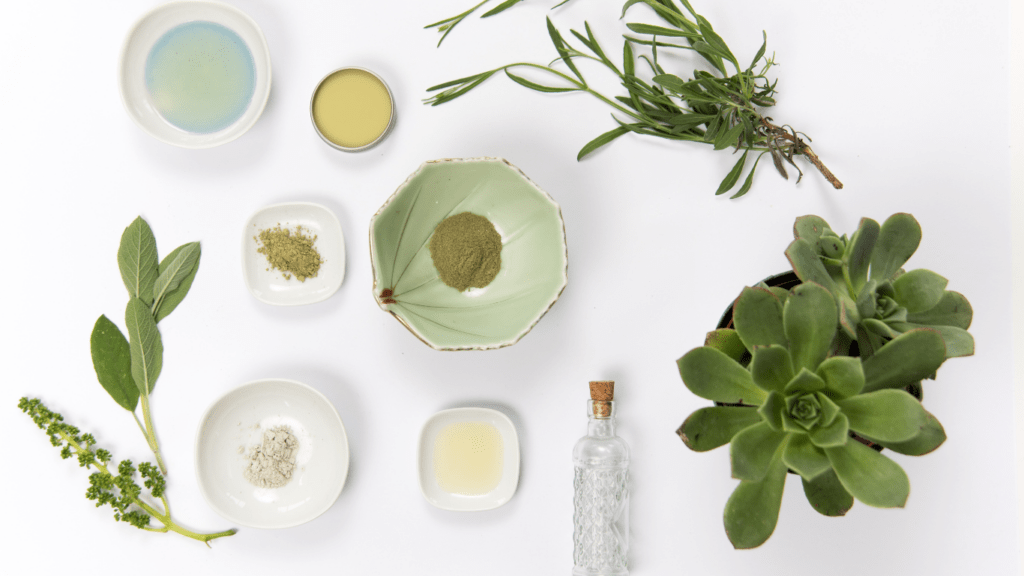The Rise of Natural Ingredients
Natural ingredients have gained traction in the beauty industry. Their perceived safety and holistic benefits attract health-conscious consumers.
Historical Context
Historically, people have relied on natural ingredients for beauty and skincare. Ancient Egyptians used olive oil, honey, and milk for skin treatments. Ayurveda, originating over 3,000 years ago, emphasizes natural herbs like turmeric and neem for various skin issues. These traditions have influenced modern preferences for natural products.
Popular Natural Ingredients
Several natural ingredients have become staples in beauty products:
- Aloe Vera: Known for its soothing and moisturizing properties, often found in lotions and gels.
- Shea Butter: Widely used for its hydrating and anti-inflammatory benefits in creams and balms.
- Coconut Oil: Popular for its deep moisturizing and antibacterial properties, used in hair treatments and skin products.
- Green Tea Extract: Valued for its antioxidant properties, incorporated in anti-aging and acne treatments.
- Argan Oil: Known as “liquid gold,” it’s used for hair conditioning and skin moisturizing due to its high vitamin E content.
These natural ingredients continue to shape consumer choices and industry practices, emphasizing a trend towards more organic and less chemically processed skincare solutions.
The Role of Synthetic Ingredients
Synthetic ingredients play a critical role in modern beauty products, offering benefits that natural ingredients might lack.
Development and Innovations
Advancements in chemistry have enabled the creation of synthetic ingredients that replicate or enhance natural compounds. These developments ensure that beauty products have a longer shelf life and more consistent quality. For instance, synthetic preservatives extend product lifespan and reduce the risk of contamination. Innovations like silicones improve texture and application, enhancing the user experience. Through these scientific breakthroughs, synthetic ingredients provide enhanced effectiveness and reliability.
Common Synthetic Ingredients
Certain synthetic ingredients are widely used in beauty products for their unique properties.
- Parabens: Preserve product longevity and prevent bacterial growth.
- Sulfates: Generate lather in shampoos and cleansers, aiding in dirt removal.
- Silicones: Enhance smoothness and spreadability in skincare and makeup.
- Retinoids: Derived from vitamin A, these compounds treat acne and reduce wrinkles.
- Synthetic Fragrances: Provide pleasant scents without the variability of natural sources.
These commonly used synthetic components highlight the industry’s reliance on science to provide safe, effective, and enjoyable beauty products.
Comparing Efficacy and Safety
Both natural and synthetic ingredients present unique advantages and potential drawbacks.
Natural Ingredients: Benefits and Risks

Natural ingredients often appeal to consumers due to their perceived purity and long history of use. Many natural compounds like aloe vera and shea butter offer anti-inflammatory and moisturizing properties, making them popular choices in skincare. However, natural ingredients can vary in quality and concentration, leading to inconsistent results. Consumers might also experience allergic reactions to certain botanical extracts.
Synthetic Ingredients: Benefits and Risks
Synthetic ingredients provide consistency and innovation by replicating or enhancing natural compounds. Retinoids and synthetic peptides, for example, are well-known for their anti-aging benefits and precise formulation. Synthetic compounds often ensure longer shelf life, making products more stable over time. Nevertheless, some synthetic ingredients, such as parabens and sulfates, have faced scrutiny over potential health concerns. Ensuring safety through rigorous testing remains essential.
Environmental Impact
The debate between natural and synthetic beauty product ingredients extends beyond personal health to environmental concerns. Understanding the sustainability of each can guide responsible consumer choices.
Sustainability of Natural Ingredients
Natural ingredients come from renewable resources, promoting environmental sustainability if harvested responsibly. For instance, cultivating plants like aloe vera and argan trees supports ecosystems and local communities. Organic farming practices reduce chemical runoff, enhancing soil health. However, over-harvesting and deforestation for ingredients like palm oil damage biodiversity. Sustainable sourcing certifications such as Fair Trade and Rainforest Alliance ensure ethical practices, but consumers must verify claims due to varying standards.
Environmental Concerns with Synthetic Ingredients
Synthetic ingredients, often derived from petrochemicals, contribute to pollution and resource depletion. Manufacturing processes for parabens and silicones can release harmful byproducts into the environment. Microplastics in synthetic exfoliants pollute oceans, affecting marine life. Though some synthetics, like lab-grown retinoids, reduce dependency on natural resources, their production still carries environmental costs. Regulatory bodies like the FDA and EPA monitor industrial practices, yet stricter enforcement and eco-friendly innovations are crucial for mitigating synthetic ingredients’ ecological impact.
Consumer Trends and Preferences
Consumer trends reveal a growing interest in natural and synthetic beauty products. This section delves into market demand and consumer perceptions.
Market Demand for Natural Products
Market demand for natural beauty products has surged. In 2020, the global natural cosmetics market was valued at $34.5 billion, showing a preference for organic and plant-based ingredients. Consumers drive this demand due to health concerns and environmental awareness. Brands like Burt’s Bees, The Body Shop, and Lush have gained popularity for their commitment to natural formulations.
Key factors influencing this demand include ingredient transparency and sustainability. Shoppers prefer products labeled “organic,” “non-toxic,” or “free from” harmful chemicals. Certification labels from USDA Organic or ECOCERT bolster consumer confidence. Market research indicates 70% of beauty consumers actively look for products with natural ingredients, reflecting a shift towards clean beauty.
The Perception of Synthetic Products
Perception of synthetic ingredients in beauty products is evolving. While some consumers remain wary, advancements in cosmetic science have altered the narrative. Synthetics like retinoids, known for their anti-aging effects, witness strong demand due to proven efficacy. Products from brands like Olay and Neutrogena exemplify successful synthetic formulations.
Safety testing and regulation play crucial roles in shaping perceptions. Organizations such as the FDA and European Commission ensure synthetic ingredients meet safety standards. Despite this, 45% of consumers express concerns over synthetic chemicals, often influenced by media and misinformation. Balancing efficacy, transparency, and education can bridge the gap in consumer trust.
Consumer trends and preferences highlight the complexities in choosing between natural and synthetic beauty products. The industry must continue innovating and educating to meet evolving consumer demands.



